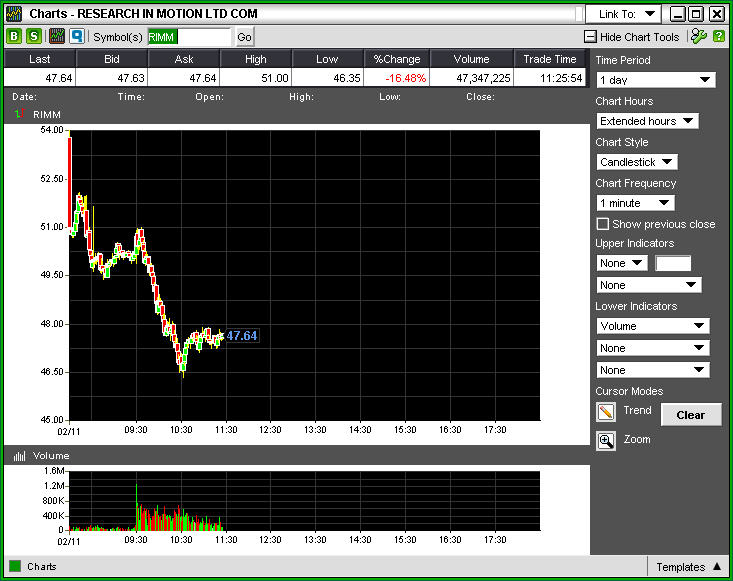RIM's fourth quarter outlook a mixed bag

Research in Motion said Wednesday that its subscriber additions will be 20 percent higher than the 2.9 million it projected, but earnings and gross margins will be at "the low end of the previously guided ranges."
RIM's outlook was clearly mixed (statement). Revenue for its fourth quarter is expected to be near the mid-point of its previous range. But earnings will be at the low end due to product mix, inventory levels and new subscribers relative to upgrades.
During its third quarter earnings conference call, RIM executives said revenue for the fourth quarter, which ends Feb. 28, 2009, was expected to be between $3.3 billion and $3.5 billion with EPS of 83 cents to 91 cents. Wall Street is currently expecting earnings of 86 cents a share on revenue of $3.4 billion, according to Reuters Estimates.
The company said that it had record net subscriber additions through December and after the holidays. That surge will become "more normalized" in the first quarter.
Update: Reading through the release and watching the trading and one question surfaces: Why is RIM getting whacked when its guidance was roughly in line and it has more subscribers? The big worry is that RIM is in a profit margin spiral as it goes consumer. And with Palm's Pre launching it's going to be more expensive to land customers. RIM may land more customers but sacrifice profit margins. In sum, the consumer market stinks and the competition from platforms such as Android is ramping up (see IDC smartphone share chart at the bottom and T-Mobile's (G1) jump).
Shares fell 16 percent.
However, if you zoom out a bit RIM is still well positioned in the smartphone market. Here's a look at IDC's fourth quarter stats (notice the T-Mobile/G1 boost):
